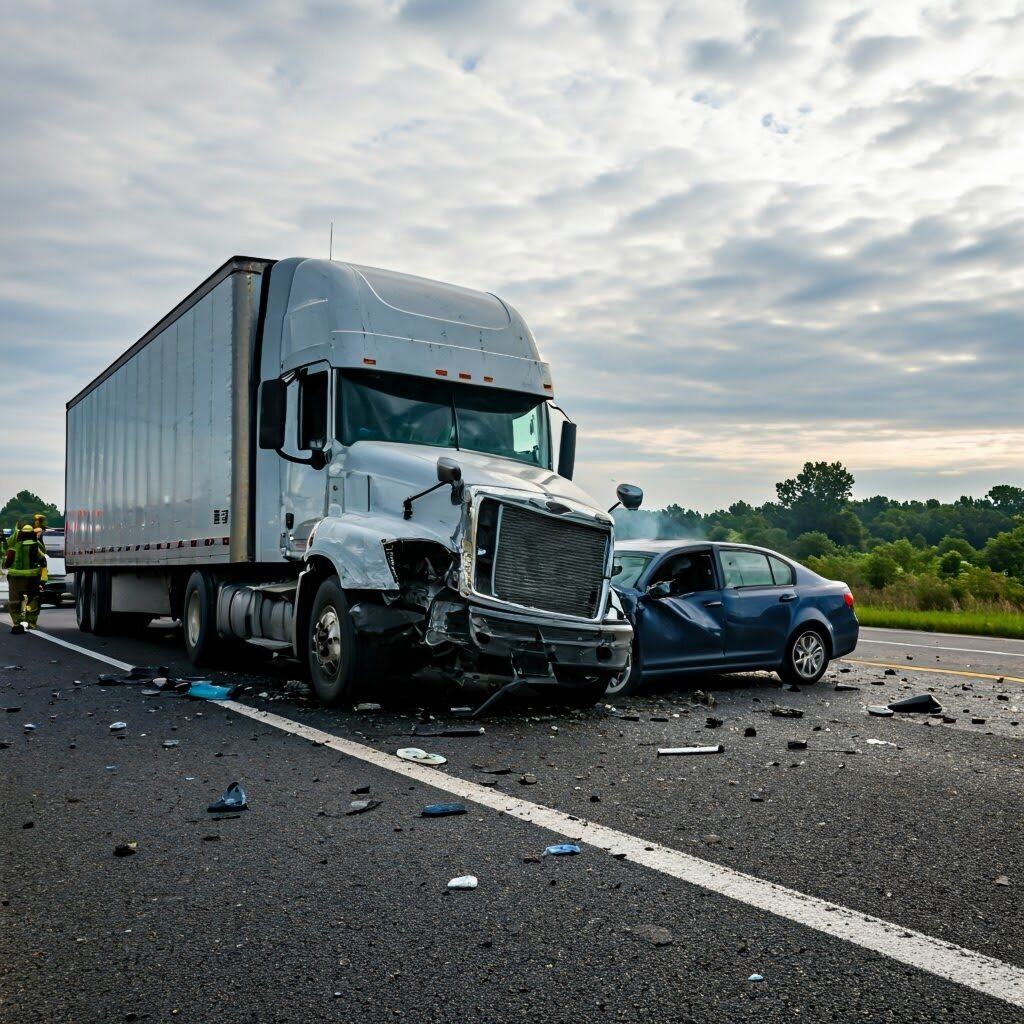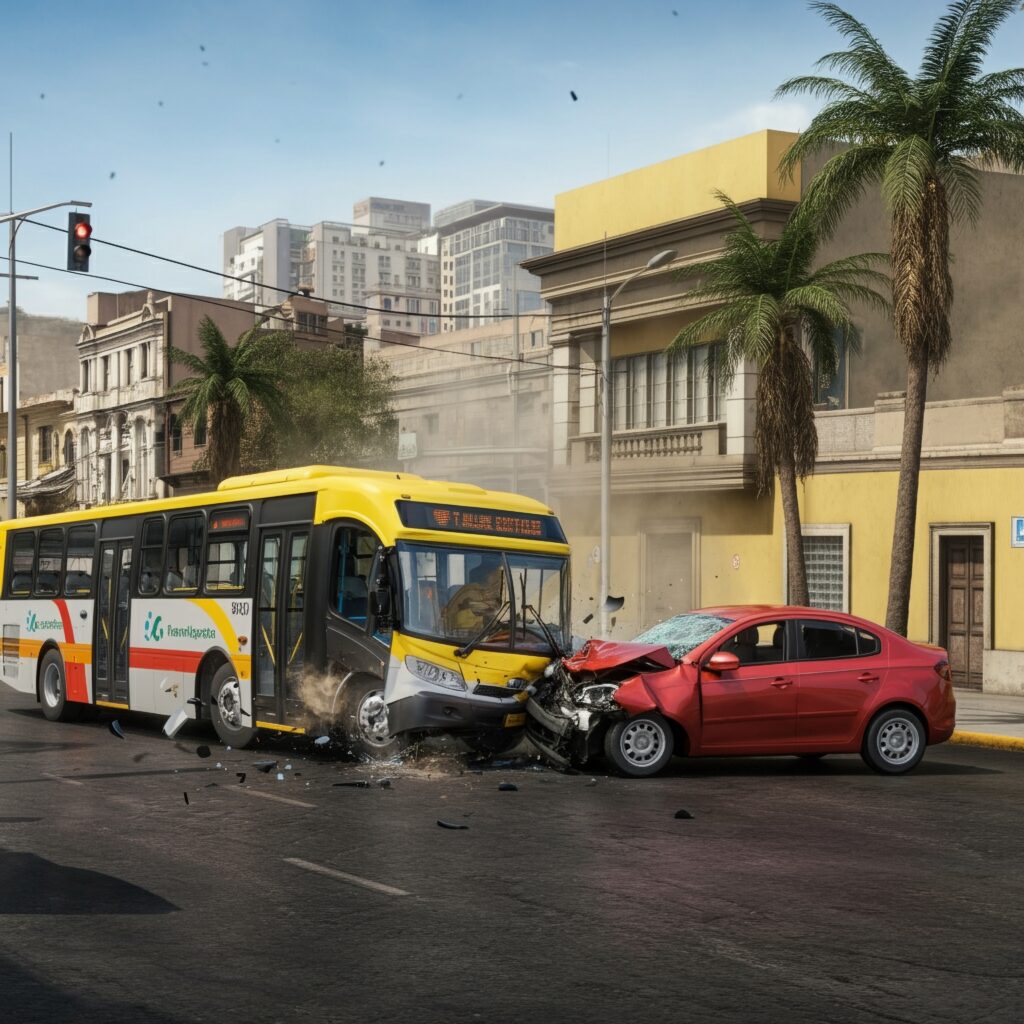A collision at any of San Antonio's most dangerous intersections introduces significant complexity into a car accident claim. The very factors that make these locations hazardous—high traffic volume, complex designs, and a history of frequent collisions—also create challenges when proving another driver’s negligence.
A San Antonio car accident lawyer can help you build a robust case against the at-fault driver and pursue compensation for your injuries, regardless of where you collided in Alamo City.

Key Takeaways for San Antonio’s Most Dangerous Intersections
- A few specific intersections in the San Antonio area consistently report a high number of collisions each year.
- The combination of intersection design, daily traffic volume, and common driver errors contributes to the danger.
- An intersection’s documented history of crashes can serve as important evidence in a personal injury claim.
- The foundation of a successful recovery rests on your ability to prove the other driver acted negligently.
- A skilled San Antonio car accident attorney gathers specific evidence related to the intersection's history and design to build a stronger liability case for you.
Identifying the Worst Crash Hotspots in Bexar County
Data consistently highlights specific areas where drivers face a higher risk of collision. While crash locations can change from year to year, certain corridors and interchanges frequently appear in reports on San Antonio's most dangerous intersections.
These locations share common traits, such as high vehicle capacity, complex lane changes, and a convergence of local and highway traffic.
5 of the Most Dangerous Intersections in San Antonio
Crash data from the Texas Department of Transportation consistently highlights specific Bexar County intersection accident hotspots. While many intersections present daily challenges, analysis reveals several locations that pose a heightened risk to drivers.
These high-crash locations in San Antonio often involve major highway loops and serve as critical points for commuters and commercial traffic.
Loop 1604 and Bandera Road
This intersection in northwest San Antonio frequently tops lists of the city's most hazardous spots. The combination of heavy commuter traffic from fast-growing residential areas and significant commercial development creates intense congestion, especially during peak hours.
Despite an innovative displaced left turn design intended to improve flow, the sheer volume of vehicles makes it a common site for rear-end and sideswipe collisions. Your lawyer analyzes traffic signal timing and the unique lane configurations when investigating an accident claim here.
I-10 and Loop 1604
A massive five-level stack interchange, the Fiesta Stack is one of the most complex and busiest in the state of Texas. It manages a tremendous volume of high-speed traffic connecting San Antonio with Austin and West Texas.
The frequent lane changes, merging ramps, and multi-level flyovers can confuse even experienced drivers, leading to serious high-speed collisions. Crash analysis often focuses on driver speed, failure to yield the right-of-way on ramps, and the intricate design of the interchange itself.
Loop 410 and Marbach Road
Located on the city’s West Side, this intersection sees a constant blend of local residential traffic, commercial vehicles, and highway commuters. The access roads along Loop 410 in this area are particularly prone to accidents, including rear-end collisions and pedestrian incidents.
This junction’s proximity to shopping centers and dense neighborhoods contributes to its reputation as one of San Antonio's most dangerous intersections.
U.S. 281 and Loop 1604
As a major hub on the North Side, this interchange accommodates traffic from suburban commuters and shoppers heading to nearby retail centers. The interchange itself is a site of ongoing construction and redesign to manage explosive growth, adding to driver confusion.
Collisions frequently occur as drivers navigate merging lanes, exit ramps, and heavy congestion, often at high speeds.
Loop 410 and Culebra Road
This intersection on the Northwest Side is another known trouble spot where local traffic intersects with a major highway loop. Stop-and-go traffic from nearby retail centers mixes with higher-speed vehicles on Loop 410, leading to a high potential for T-bone and angle crashes.
Drivers who misjudge traffic speed or fail to yield often cause serious Bexar County intersection accidents at this location.
Common Factors That Contribute to Intersection Collisions
Collisions at the most dangerous intersections in San Antonio rarely happen for a single reason. Instead, a combination of factors, often involving road conditions and driver behavior, comes together to cause a crash.
A thorough investigation uncovers these contributing elements to paint a full picture of liability.
Negligent Driver Behaviors
The most common cause of intersection accidents remains driver negligence. Even in a well-designed intersection, one driver's mistake can have serious consequences for others. Proving fault in a collision requires showing that the other party failed to operate their vehicle with reasonable care.
Common examples include:
- Distracted Driving: A driver texting, speaking on the phone, or interacting with a GPS diverts their attention from the primary task of driving.
- Speeding: Exceeding the speed limit or driving too fast for conditions dramatically reduces the time a driver has to react to a hazard.
- Aggressive Driving: Actions such as tailgating, weaving through traffic, and failing to yield the right of way create unsafe conditions for everyone.
- Impaired Driving: Operating a vehicle under the influence of alcohol or drugs impairs judgment, coordination, and reaction time.
Heavy Traffic And Congestion Patterns
Many of San Antonio’s most dangerous intersections suffer from extreme traffic congestion, especially during rush hour. When traffic slows to a crawl or stops and starts unpredictably, the risk of rear-end collisions spikes.
Frustrated drivers may also engage in risky behaviors, such as aggressive lane changes or running yellow lights, to escape the gridlock. These congestion patterns are often predictable.
Traffic studies and city planning documents can show that officials knew about the dangers a certain area posed. This information can help demonstrate that a collision was a foreseeable consequence of the known conditions.
How an Intersection’s History Affects Your Claim
When a collision occurs at one of San Antonio’s most dangerous intersections, the location's history can become a valuable piece of evidence. This history may establish that a known hazard existed and that responsible parties failed to address it.
A pattern of similar accidents can support your argument that the intersection’s condition or design was a contributing factor. A lawyer experienced with Bexar County intersection accidents knows how to find and use this data.
Official crash statistics from the Texas Department of Transportation or the San Antonio Police Department can reveal long-standing problems. This information lends weight to a claim by exposing a pattern of danger that extends beyond a simple, one-time driver error.
Using the intersection’s history helps build a narrative that explains how and why the crash occurred. It provides context that an insurance adjuster or jury can understand.
Documenting that you were a victim of a persistent and known danger can make a significant difference in the outcome of your claim. Important evidence types include:
- Crash Data Reports: These official city and state documents list the frequency and types of collisions at a particular location.
- Previous Lawsuits: Legal filings related to prior accidents can demonstrate a history of recognized and unaddressed hazards.
- Traffic Engineering Studies: Professional reports may highlight known design flaws, unsafe traffic patterns, or other dangers.
- Resident Complaints: A record of complaints to the city about one of San Antonio’s most dangerous intersections shows that authorities had notice of the problem.
Establishing Fault After a San Antonio Intersection Wreck
Proving another driver's negligence is the cornerstone of any claim involving one of San Antonio's most dangerous intersections.
At busy intersections, where multiple vehicles are moving in different directions, determining fault requires a methodical approach to gathering and analyzing different types of evidence.
Key sources of proof include:
- Police Report Analysis: The official crash report provides an officer’s initial observations and diagrams of the scene, and a lawyer helps ensure its contents accurately reflect the facts of the incident.
- Eyewitness Testimony: Independent witnesses offer unbiased accounts of the collision, and promptly locating them to document their statements helps confirm key details like right-of-way.
- Video Footage Procurement: A car accident lawyer can secure video from traffic cameras, personal dashcams, or nearby businesses to provide objective proof of what happened.
- Accident Reconstruction: In complex cases, accident reconstructionists use physical evidence, vehicle damage, and software to scientifically recreate the crash sequence and pinpoint the cause.
- Electronic Data: Cell phone records can demonstrate distracted driving, while data from a vehicle's event data recorder can show its speed and braking activity just before impact.
How a Personal Injury Lawyer Helps Your Car Accident Claim
An experienced car accident attorney performs critical tasks that protect your interests and strengthen your claim for compensation. Their work allows you to focus entirely on your medical recovery.
Specific ways a lawyer helps include:
- Independent Investigation: Your legal team conducts a thorough and independent investigation into the crash, rather than relying on the conclusions of the police or insurers.
- Evidence Procurement: Your lawyer takes immediate action to gather time-sensitive evidence, such as traffic camera footage, witness accounts, and expert reports, regarding the intersection itself.
- Communication Shield: They manage all communication with insurance companies, protecting you from adjusters' tactics designed to minimize your claim's value.
- Full Damage Calculation: Your attorney may collaborate with medical and financial experts to calculate the total value of your losses, including future medical needs and diminished earning capacity.
- Strategic Negotiation: Lawyers are skilled negotiators who use the collected evidence to argue for a fair settlement that fully compensates you for your physical, emotional, and financial damages.
- Litigation Readiness: While most cases settle, your lawyer can take your case to trial if the insurer refuses to play fair.

FAQ for San Antonio’s Most Dangerous Intersections
Can I File a Claim if I Was Partially at Fault?
Yes, Texas follows a proportionate responsibility rule. You can still recover damages as long as a court or jury finds you 50% or less responsible for the crash. However, your recovery amount will decrease by your percentage of fault. If your percentage of fault exceeds 50%, state law bars your recovery.
How Long Do I Have To File a Car Accident Lawsuit in Texas?
In Texas, the statute of limitations for personal injury claims is typically two years from the date of the accident. You lose your right to seek compensation through the court system if you miss this deadline.
Some exceptions can alter this timeline, so contact a San Antonio personal injury lawyer immediately to discuss your options.
What Kind of Compensation Can I Pursue After a Car Crash in San Antonio?
After a collision caused by another's negligence, you may pursue compensation for both economic and non-economic damages. Economic damages cover tangible losses, including medical expenses, lost wages, and property damage.
Non-economic damages compensate you for intangible harms like pain, suffering, and emotional distress.
Does the Type of Collision Affect My Case?
Yes, the type of collision, such as a T-bone, head-on, or rear-end crash, can influence the case. It often provides clues about which driver had the right-of-way and who acted negligently. For example, a T-bone crash at an intersection frequently points to one driver running a red light or stop sign.
Similarly, a rear-end collision almost always indicates the rear driver was following too closely or was not paying attention. An attorney uses this information, along with evidence like vehicle damage, to build a clear argument for who was at fault.
What if a Road Defect at an Intersection Caused My Crash?
If a dangerous road condition, like a malfunctioning traffic light or poor design, contributed to your accident, you might have a claim against a government entity. These claims are complex, with special rules and shorter deadlines.
A personal injury attorney can determine if a government body shares liability for your injuries.
Contact a San Antonio Car Crash Lawyer Today
In the confusion following a wreck at a busy intersection in San Antonio, the single most important element that builds a successful claim is objective evidence. Conflicting stories and biased memories create confusion, but hard facts cut through the noise.
Let a dedicated personal injury lawyer collect the video footage, police reports, and witness statements that tell a clear story. The team at Lorenz & Lorenz, PLLC makes gathering this proof our immediate priority. We’ll then get to work building your claim.To put our experience to work for you, call Lorenz & Lorenz, PLLC at (512) 477-7333 for a free consultation.
